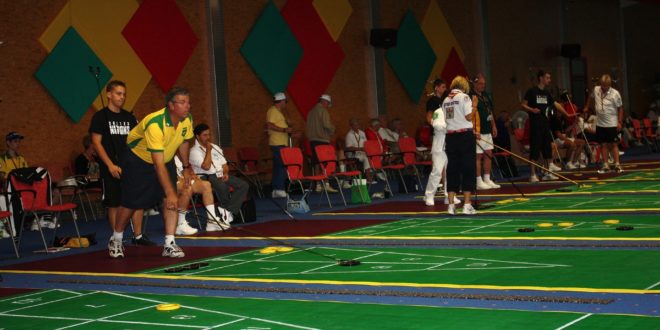Once slated as the quintessential game for retiree’s, shuffleboard is actually seeing a widespread rise in popularity among generations old and young across the world. That’s great news because it means chances are good that a shuffleboard court or league might be available near you.
Don’t miss this essential guide to shuffleboard – where it came from, benefits of playing, and how to get started:
A quick history of shuffleboard
There is a fun history lesson in the story of shuffleboard. While there is no clear origin story for the game, it is well-known that shuffleboard was being played in Europe over 500 years ago. In fact, King Henry VIII of England liked to play (and gamble money on games), though it was known back then as shovel board or shove-groat; groat was the name of a large English silver coin that was worth about four pence and was the object slid down the shuffleboard table.
Colonists brought shuffleboard over to the Americas and frequently played it in taverns and at group gatherings. There was even a court case in North Carolina in 1848 about shuffleboard, questioning whether it was a game of chance or skill. Shuffleboard only grew in popularity, especially as the hardware for the game itself experienced major upgrades from top-of-the-line cabinet makers. In the early 20th century, especially in the U.S., shuffleboard was renowned as the ultimate game for socializing and many Hollywood celebrities even had shuffleboards installed in their homes.
While experiencing a dip in popularity in the 60s and 70s, shuffleboard slowly started to make a comeback and is having another heyday in the 21st century with new leagues popping up every year and even miniature versions of the game being set up in pubs and bars. The game is often times called “deck shuffleboard” too for its frequent placement on cruise ships.
How do you play shuffleboard?
The objective of floor or deck shuffleboard is to slide a weighted disk down a narrow court with a cue-stick so that it lands within a specific scoring area. Weighted disks are typically two different colours (one per team playing) and the flat playing area is made of concrete, wood, or some other smooth, hard material.
Markings on either end of the court denote scoring zones; they look like triangles pointing in towards the centre of the court. This scoring diagram allots values to six different portions of each triangle. The top section is given 10 points, the two side-by-side sections right under it 8 points, and the two under those 7 points.
Two players take turns sliding their disks down the court one at a time for a total of four disks each. At the end of that round, the score is tallied. Whoever has a disk sitting squarely in a scoring zone without overlapping any other zones or borderlines (this is known as a “good”) in the diagram is awarded those points. Points are added to each player’s respective score each round though penalties can be incurred.
In table shuffleboard, similar playing rules apply except the “court” is a long, narrow wooden or laminate table covered in silicone beads or sand to reduce sliding friction. Players use their hands to slide metal and plastic weighted disks (pucks) down the table and aim to reach the highest scoring area of the table without falling off the end. More points are awarded to the player whose pucks are furthest down the board towards the edge.
In floor shuffleboard, teams typically play until one reaches 75 points (and therefore wins). In table shuffleboard, players most often play a version of the game where the first to 21 points wins.
Benefits of playing shuffleboard
Play anywhere – like badminton, shuffleboard can be played anywhere, on an outside court or an inside table. This versatility makes it an accessible game for seniors year-round!
Low-impact – the enduring popularity of shuffleboard over many centuries may be due in large part to the low-impact nature of shuffleboard. Minimal physical fitness is required making it more attractive to seniors, especially those with physical limitations. Shuffleboard does require you to play on your feet, however, so some older adults may benefit from wearing supportive insoles when standing for long periods of time at a shuffleboard court.
Social game – as a competitive game, shuffleboard provides a unique opportunity for seniors to interact socially with others and use both physical and mental skill to succeed. Social interaction continues to play an important role in senior wellbeing and can help combat depression.
Flexible – the game of shuffleboard is itself rather flexible. There are a host of games you can play on a shuffleboard court, some with increasing levels of physical intensity. Knock off, Crazy eight, Horse collar, Target, the list goes on.









Join the Discussion
Type out your comment here:
You must be logged in to post a comment.